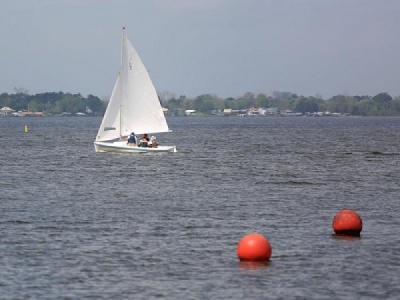
Posted on January 10, 2019
Officials this month will begin filtering and dumping sediment from False River onto a neighboring property, the first time that particular tactic has been used to help restore the long-troubled waterway.
The long-term strategy is more labor-intensive than previous efforts, but those involved say it’ll be more effective in “slowing down Mother Nature.”
The oxbow lake in Pointe Coupee Parish was once a prime fishing location, but as drainage water flowed in, silt build-up caused changes in habitat that weren’t as conducive to fish spawning or to vegetation.
Major Thibaut has long been involved in efforts to restore the waterway, first as a state representative and now as Pointe Coupee’s first parish president. He said the $1.7 million, 94,500 cubic yard dredging effort will clear out the lake’s north end, the side more often used for recreation.
Drawdowns and dredging have taken place multiple times on the river’s south end, but in those instances, officials removed the silt from the water and created a makeshift 20-acre island in the middle of the water. They said that benefited wildlife in the area and gave some nutrients to fish, but Thibaut says removing it completely is the ideal solution.
“Any time you have drainage water coming in you bring dirt, silt, whatever else,” he said. “It’s Mother Nature and we’re just trying to slow down Mother Nature by creating better ways to handle the drainage and slow down the water flow.”
Louisiana Department of Wildlife and Fisheries biologist manager Brian Heimann said removing the silt reduces turbidity in the water, helps fish survive and increases the depth of the lake, creating a multitude of benefits.
Some fish species like crappie prefer a hard-bottomed lake because soft sediment can cause eggs to sink and suffocate. A deeper lake means less light penetration below the surface which Heimann says is beneficial for phytoplankton and zooplankton blooms that belong to the fish food chain.
“We’d love to get (the silt) completely out of the lake but on the south end there just wasn’t an alternative. The nearest area under consideration was a wetland and that’s not allowed so the alternative was to create this island and contain the sediment on that island in the lake,” Heimann said. “On the north end, we had that alternative and that spot to put it on land.”
LDWF stocked close to 10,000 black crappie and bluegill in late December to enhance fish numbers, and Thibaut has previously said that improving recreation on the lake is a goal of his so the parish can again see tourism revenue boosting the area.
“The fishing is still good but we’re trying to improve the water quality, access for landowners and boat owners and to improve recreational opportunities for years to come,” Thibaut said. “We know it’s the lifeblood of this region, a lot of people come here, they have camps here, homes here, it drives a lot of revenue and the tourism and tax dollars all end up being revenue to our school system, the parish, the sheriff, all of those places.”
Residents and visitors should expect to see crews on site as soon as this week, and the work could take up to six months, according to LDWF.
Source: The Advocate





